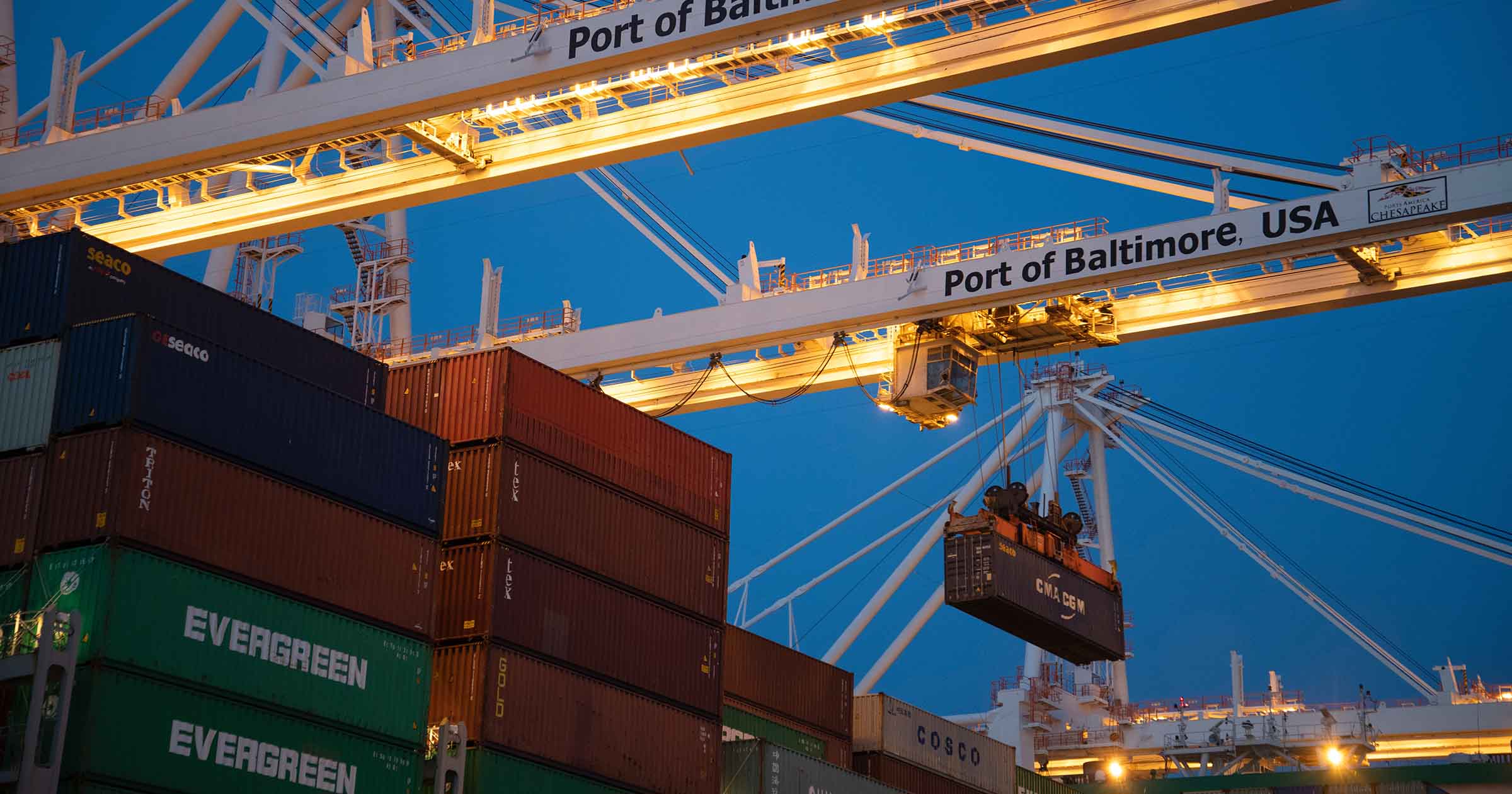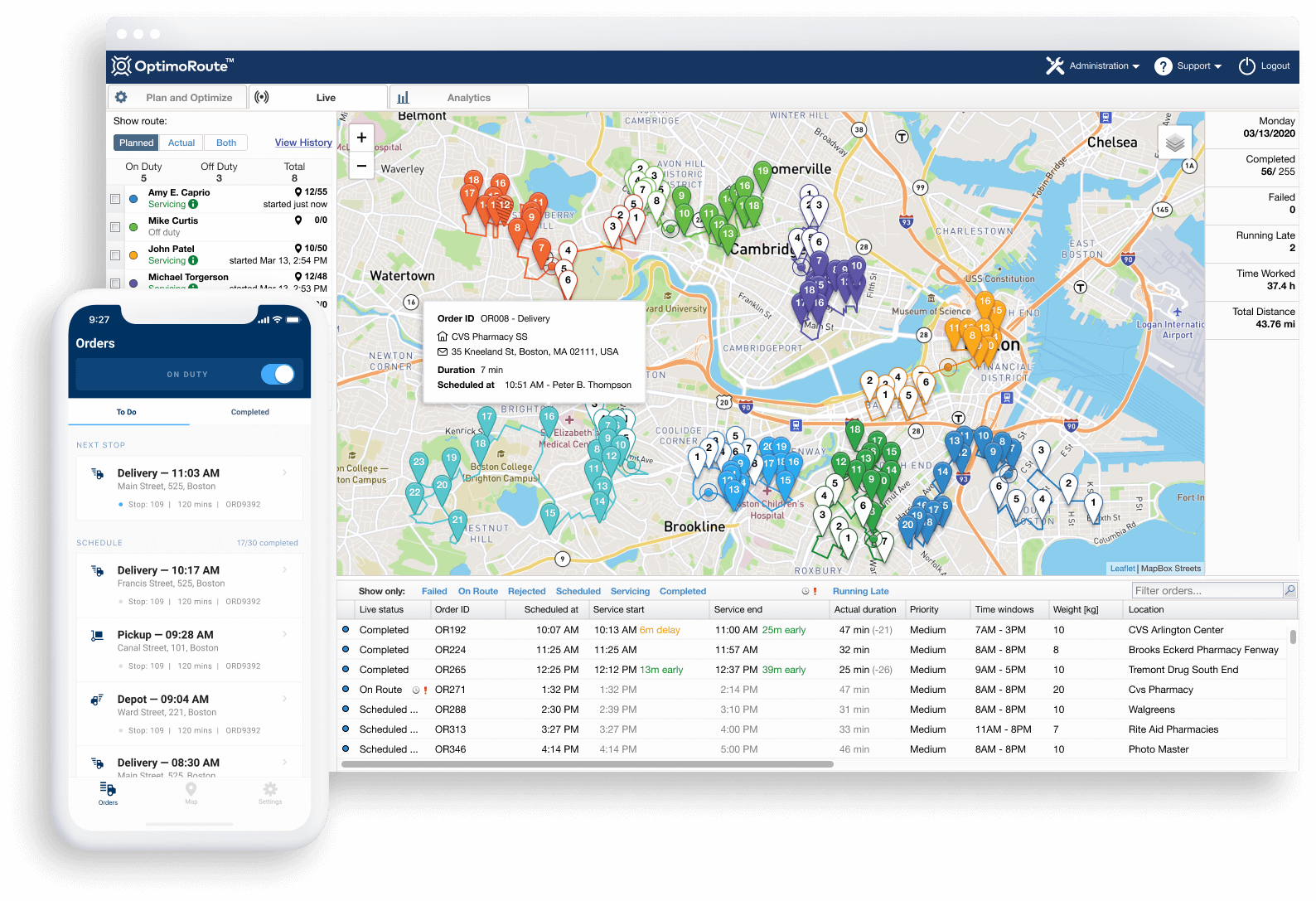A Guide to Carbon Neutral Shipping for Businesses
6 min read

The International Maritime Organization recently released the findings of its most recent Greenhouse Gas Study—and the results aren’t good for the shipping industry. The study found that carbon dioxide (CO2) emissions (a major contributor to the global climate crisis) increased by more than 9% from 2012 to 2018. This isn’t just bad for the environment; it’s bad for business.
Consumers care about sustainability now more than ever. In fact, 80% of the individuals who participated in a recent study stated they “are willing to pay 10% more for eco-friendly packaging and shipping.” This makes carbon neutral shipping essential for businesses looking to impress customers.
Jump to the section that most interests you:
- What Is Carbon Neutral Shipping?
- Why More Companies Are Switching to Carbon Neutral Shipping
- How to Go Carbon Neutral in Shipping
- Reduce Delivery Mileage and Fuel Expenditure With OptimoRoute
- FAQs About Carbon Neutral Shipping
What Is Carbon Neutral Shipping?
Carbon neutral shipping is a blanket term that encompasses all of the practices businesses use to lower carbon emissions. This encompasses strategies used in every phase of shipping, from packaging to transporting goods for delivery. What these strategies look like in practice can vary depending on the specific business and the industry it operates in. But all carbon neutral strategies work to reduce the environmental impact of shipping.
Why More Companies Are Switching to Carbon Neutral Shipping
Consumers don’t just care about the environment—they’re using their buying power to support businesses committed to environmental issues. As a result, sustainable practices like using green technology in construction are on the rise. Businesses across all industries are committing to reducing their climate impact in dramatic ways, including launching carbon neutral initiatives. For example, Microsoft committed to not just eliminating its carbon emissions but becoming fully carbon negative by 2030.
How to Go Carbon Neutral in Shipping
Making your shipping logistics carbon neutral helps lower your business’ carbon footprint. It also keeps your customers happy with how your company operates, increasing the chances they’ll remain loyal to your business. You can help your business go carbon neutral by purchasing carbon offsets and implementing green logistics strategies to reduce your shipping emissions.
1. Measure your carbon footprint
You need to know what causes your business’ emissions if you hope to lower your environmental impact. Start measuring your carbon footprint by first identifying all of the ways your business uses electricity and gas. These power sources burn fossil fuels, which release C02.
Once you’ve identified where your emissions are coming from, assess your energy bills to determine how much energy your business uses. You’ll also need to collect data about your supply chain, including how far your employees and products travel. Once you’ve collected all of these data points, you can consult a specialist, who’ll have access to a variety of formulas that can convert your energy usage into carbon emissions. Or you can use the EPA’s free carbon emission calculator to convert the data yourself.
2. Use eco-friendly packing materials

Using sustainable products helps lower your carbon footprint by reducing pollution. Look for packing materials made of recycled materials or manufactured with renewable energy sources. With more companies focused on sustainability, these materials are becoming easier for businesses to find. For example, biodegradable packing peanuts have become incredibly easy to find as they are an increasingly popular replacement for the less eco-friendly polystyrene peanuts many of us are familiar with.
If you don’t do your own packaging in house, then the emissions from the third-party organization you use will also be factored into your overall carbon footprint. You’ll need to do your research to make sure whatever company you hire is also working toward eco-friendly mail and shipping. Look for an eco-friendly mail or shipping company that uses sustainable materials, but make sure those materials can successfully hold your product.
3. Maximize packaging efficiency
According to the EPA, only around 50% of plastic packaging gets recycled. This means the other half ends in landfills, which are a major source of pollution. While you can’t force your customers to recycle the packaging you use, you can limit how much packaging customers receive. Efficient packaging reduces the number of materials you use and gives your customers less packaging to dispose of.
4. Make your warehouse more energy efficient
The best way to improve the energy efficiency of your warehouse is to lower energy consumption. Start by conducting an audit of your warehouse and operating practices to see how much energy your warehouse uses and what it uses the energy for. Check energy and power bills to see exactly how much energy you use. You should also evaluate the structure of your physical warehouse—specifically the details that can impact your energy usage, like how much heat escapes the warehouse through the doors and windows.
Lighting is typically one of the biggest energy consumers in a warehouse—but it doesn’t have to be. One way to lower the environmental impact of your lighting is by switching to energy-efficient light sources like LED, which reduces carbon emissions by 50-70%. You can also insulate your warehouse to help control the temperature inside the building and lower your heating costs.
5. Optimize transportation and delivery
There are a growing number of ecommerce businesses in America. With that comes a growing number of delivery vehicles, which are a major contributor to the greenhouse gas emissions that cause climate change. If businesses don’t change their transportation practices, the World Economic Forum predicts there will be a 32% increase in CO2 emissions in the next decade.
You can help curb the impacts of your transport and delivery by switching to green transportation. One way to do this is to purchase energy efficient vehicles. But this option is expensive. A better solution is to lower the carbon footprint of your transportation by using route optimization to reduce mileage and lower your overall fuel consumption.
Reduce Delivery Mileage and Fuel Expenditure With OptimoRoute
OptimoRoute is an eco-friendly shipping and delivery tool that works to help you minimize your environmental impact. It makes your shipping practices more environmentally friendly by lowering mileage to reduce your overall fuel consumption.

Reduce miles on the road
The best way to lower your carbon footprint is by reducing the number of miles your delivery drivers travel. That’s because driving any vehicle requires you to burn fossil fuels, consequently releasing emissions like methane and carbon dioxide. And the more miles you drive, the more emissions you release. OptimoRoute helps you lower mileage by using route optimization to find the most direct route to each delivery location.
Smart routing software allows you to combine pickup and delivery
Deadhead mileage refers to the miles your delivery trucks travel without any product in the vehicle. These miles are costly to businesses. OptimoRoute helps you to eliminate them by leveraging reverse logistics strategies to carefully plan pickups so you don’t have to make extra trips. The system will account for the vehicle’s payload capacity to determine when there will be enough space to accommodate a pickup. Then, OptimoRoute automatically schedules the pickup and creates a route for the driver. This allows you to lower your carbon emissions by maximizing efficiency.
Optimize for long-haul deliveries
OptimoRoute’s planning functionality allows you to plan routes as many as five weeks into the future—including long-haul routes. The system makes it easy to plan multi-day trucking routes by automating the process for you. All you need to do is upload specific details such as the delivery and pick-up locations, the duration of the trip, and the number of breaks the driver should take.
Reduce fuel usage: a critical part of achieving carbon neutral shipping
The more time your delivery vehicles spend on the road, the more fuel they burn—and the higher your business’ carbon emissions will be. Using OptimoRoute automates the process of finding the most direct path to each destination on your route. This makes it easy for you to make the transition to carbon-neutral shipping.
Sign up for a free 30-day trial to begin lowering your carbon footprint with OptimoRoute.
FAQs About Carbon Neutral Shipping
In the next section, we’ll discuss a few of the most frequently asked questions about carbon neutral shipping.
What is carbon offset shipping?
Carbon offset shipping is an environment-focused strategy that works to reduce the environmental impact of a business by investing in sustainable causes. Carbon offset shipping does not reduce the carbon footprint of a business’s operations. Instead, the business may choose to purchase carbon offsets to counteract the damage done by the carbon emissions of the business.
Is carbon neutral shipping expensive?
There are costs involved with changing how your organization operates to go carbon neutral. However, the benefits of reducing your carbon emissions may offset the costs. For example, lowering the amount of CO2 emissions your business is responsible for may help you win over new customers while investing in carbon offsets like reforestation can qualify your business for tax credits.
What are the main causes of carbon emissions in shipping?
According to the EPA, the largest cause of carbon emissions is burning fossil fuels, like coal, gas, and oil. Shippers burn these fossil fuels to provide power to run their warehouses and power vehicles to transport goods.
Try OptimoRoute™ for Free
No installation or credit card required


